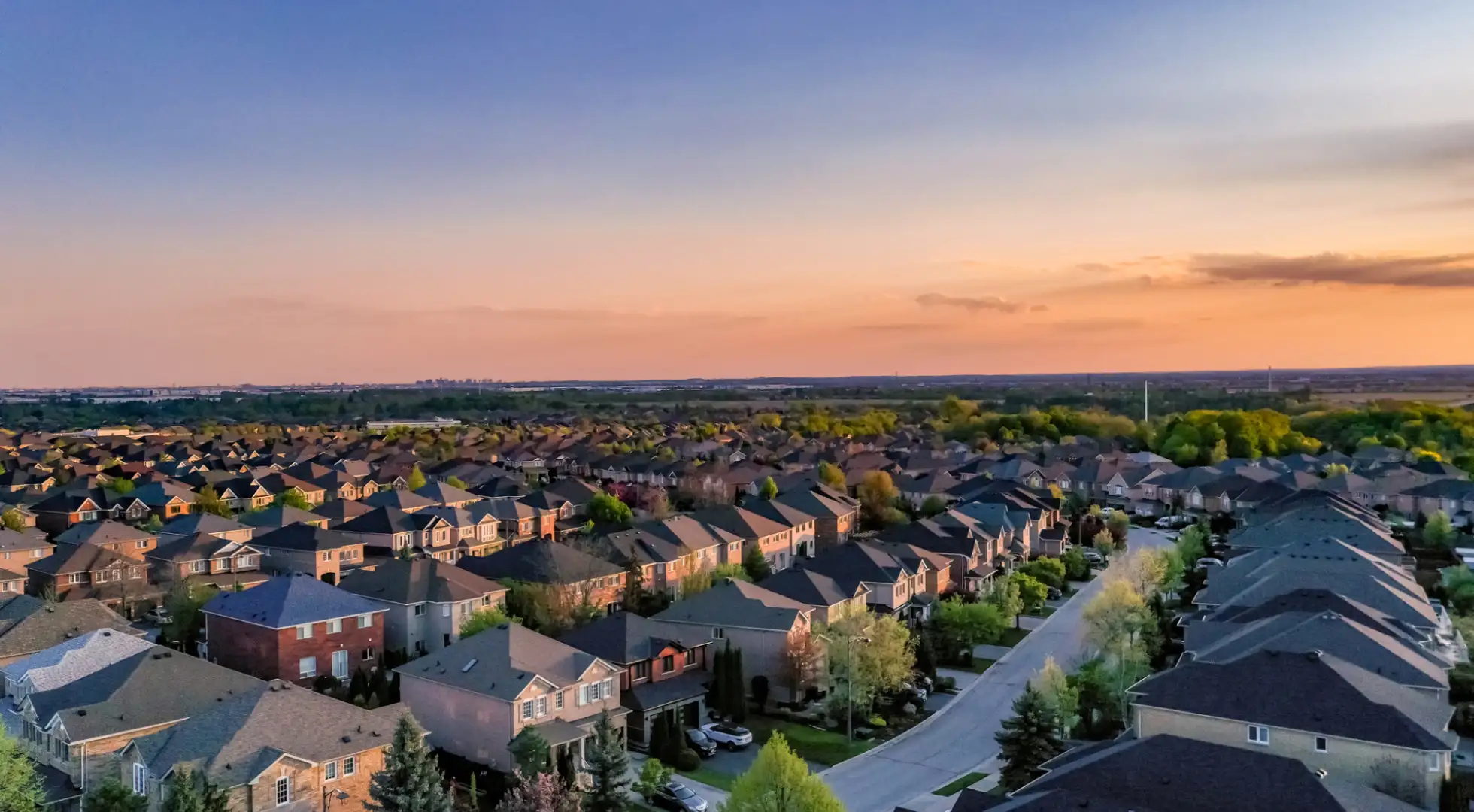Getting a Conventional Loan, No Appraisal Required

Some conventional loans may qualify for an appraisal waiver, allowing buyers and homeowners to skip the cost and delay of a traditional appraisal. This guide explains how appraisal waivers work, who qualifies, and when an in-person appraisal may still be required.
Appraisals help ensure you’re not overpaying when purchasing a home, although they come with a cost and delay to closing.
But technology is changing the need for in-person appraisals in some cases.
If you're interested in a conventional loan with no appraisal needed, you might be in luck: Fannie Mae and Freddie Mac both offer appraisal waivers on purchase and refinance loans in certain situations.
Advantages of Conventional Loans with No Appraisal
Even with the benefits of an in-person appraisal, some borrowers would prefer a conventional loan that doesn’t require one.
This is often to avoid paying appraisal costs. According to a 2023 study by the National Association of Realtors, the median home appraisal fee is $500. Their research found that 86% of appraisals cost $400 or more, and nearly 10% run above $800.
Plus, getting an appraisal-free mortgage could help you close seven to 10 days sooner, says Freddie Mac.
Different Types of Appraisals
Conventional lenders address appraisals in one of three ways:
Traditional Appraisal – A traditional appraisal involves a licensed or certified property appraiser visiting the home and inspecting its interior and exterior. The appraiser then researches recent local property sales to estimate a fair market value for the home.
Desktop Appraisal – Desktop appraisals are also completed by a licensed or certified property appraiser. But instead of requiring an in-person home inspection, the appraiser conducts their research online based on publicly available and alternative data sources.
Appraisal Waiver – Fannie Mae or Freddie Mac’s computerized underwriting system determines that an appraisal is not required. This is sometimes called a property inspection waiver, or PIW.
During the COVID-19 pandemic, conventional lenders allowed appraisers to do "drive-by" appraisals, which did not include an in-person inspection of the home's interior. As of July 2022, Fannie Mae no longer accepted these exterior-only inspections.
Freddie Mac guidelines still allow for exterior-only appraisals in certain situations, although many lenders may opt for a traditional inspection instead.
Who Is Eligible for a No-Appraisal Conventional Mortgage?
When it comes to conventional loans, the lender's automated underwriting system determines what type – if any – of appraisal is required.
The system evaluates numerous factors, including details about your credit profile and financial qualifications and the specifics of the property itself.
The transactions most likely to receive a waiver include borrowers with high credit scores, a substantial down payment (or existing equity for refinances), additional assets, and other factors indicating a low-risk loan.
The system also has access to a database of past appraisals. If the property has received a valuation in the past few years, the system might waive the need for a new appraisal.
You are, however, less likely to be able to waive an appraisal in rural areas or places where homes vary in size and age due to less reliable property data.
Types of Conventional Mortgages That May Receive An Appraisal Waiver
Conventional loans without an appraisal are available for purchase and refinance transactions when the computerized underwriter system deems the transaction eligible. Because it’s based on an undisclosed algorithm, it’s nearly impossible to predict when a property will receive a waiver.
However, there are some guidelines.
Properties have to be single-unit to qualify, which includes condos. Primary residences and second homes are eligible for both Fannie Mae and Freddie Mac. Fannie Mae, however, also provides for no-appraisal refinances on investment properties.
If you're looking for a cash-out refinance and want to avoid an appraisal, you must use a lender who works with Fannie Mae. Freddie Mac's no-appraisal programs do not allow borrowers to receive cash back at closing.
Guidelines are also specific as to when appraisal waivers are not available. Some of the properties and transactions that aren’t eligible for an appraisal waiver include:
Multi-unit residences
New construction
Transactions involving gifts of equity
Properties with a price or estimated value of $1 million or above
Note: Newly constructed properties with an existing appraisal on file may be eligible. This would likely be from a previous purchase agreement that failed to close.
Fannie Mae vs. Freddie Mac Guidelines
There are a few other minor differences between Fannie Mae and Freddie Mac regarding the requirements for their no-appraisal mortgage programs:
Fannie Mae restricts transactions that involve gifts of equity, but Freddie Mac does not allow non-arm’s length transactions.
Fannie Mae's appraisal waivers are good for four months from when they're offered. Freddie Mac guidelines specify that waivers expire after 120 days.
Freddie Mac allows for a purchase price or estimated value of up to $1,000,000. Fannie Mae requires this figure to be $999,999 or less. While this seems like splitting hairs, you could end up avoiding an appraisal by reducing the purchase price, or estimated value on a refinance, by $1.
https://www.mortgageresearch.c...Maximum Loan-To-Value (LTV) For No-Appraisal Conventional Loans
Here are the maximum loan-to-values (LTVs) accepted to qualify for different types of no-appraisal conventional loans:
Fannie Mae | Freddie Mac | |
Purchase Transactions | Primary residences and second homes: 90% LTV Primary residences in high-needs rural regions*: 97% LTV | Primary residences and second homes: 80% LTV |
No Cash / Limited Cash-Out Refinances | Primary residences and second homes: 90% LTV Investment properties: 75% LTV | Primary residences and second homes: 90% Investment properties: n/a |
Cash-Out Refinances | Primary residences: 70% LTV Second homes and investment properties: 60% LTV | Primary residences: 70% LTV Second home: 60% LTV |
*High-needs rural borrowers can also qualify with Community Seconds loans up to 105% CLTV
Appraisal Waivers: When a Traditional Appraisal Is Still Needed
In some scenarios, the automated underwriting system may deem a property eligible for an appraisal waiver, but the lender must have a traditional appraisal completed anyway.
A few instances when this could apply include:
There has been significant damage to the property from a fire, flood, or other natural disaster
The purchase agreement lists major repairs needed to ensure the property’s safety or security
Local laws require an appraisal
Other interested parties, such as a mortgage insurance provider, require an appraisal
Fannie Mae guidelines also restrict lenders from accepting an appraisal waiver if you use rental income from the subject property to help qualify for the loan. This most commonly applies to investment property refinances but could affect some people receiving income from an accessory dwelling unit (ADU). It may also impact HomeReady loans qualifying on roommate income.
Freddie Mac, which doesn’t offer investment property refinances without an appraisal, explicitly excludes single-family properties with rental income from an ADU that is being used to qualify.
Then there's the fact that many homebuyers who qualify for an appraisal waiver still choose to have one completed for protection and peace of mind.
Guidelines for Other Types of No-Appraisal Mortgages
Although conventional loans are the only type of conforming mortgage allowing you to buy a home without an appraisal, FHA, VA, and USDA lenders all permit no-appraisal refinances. These streamline refinance programs don't allow cash-out (in most cases), and you can only refinance loans insured by that agency. However, the process is simple and can often result in significant savings.
FHA Streamline Refinance
FHA Streamline Refinance mortgages are available to borrowers with an existing FHA loan. To qualify for an FHA Streamline Refinance, you must have made on-time mortgage payments for at least the past six months and have no more than one late payment over the past year.
You must also wait at least 210 days after closing an FHA loan to apply for a Streamline Refinance. In addition, it needs to be at least six months from the date of your first mortgage payment. For FHA loans that have been assumed, you must have made at least six payments since assumption.
VA Interest Rate Reduction Refinance Loan (IRRRL)
The VA Interest Rate Reduction Refinance Loan (IRRRL) program requires you to refinance an existing VA loan. You must refinance to a lower interest rate unless your current mortgage is adjustable.
Your monthly principal and interest payment must also be lower than your current loan unless:
You’re refinancing an ARM
Your IRRRL is for a shorter term than your existing loan
You’re including energy efficiency improvements in your refinance
Note: Most streamline refinance programs do not allow cash back at closing. However, an IRRRL enables you to receive reimbursement of up to $6,000 for energy efficiency improvements completed within 90 days before closing.
USDA Streamlined Refinance
The USDA Streamlined Refinance requires you to have an existing USDA loan. The application date must be at least 12 months after your loan closed, and you must also have made on-time payments for at least the past 180 days.
USDA Streamlined-Assist Refinance
Unlike the standard streamline refinance, the USDA Streamlined-Assist does not require you to meet credit score and debt-to-income guidelines.
You'll need 12 months of on-time payments, and you can't usually remove co-borrowers from the mortgage. Still, Streamlined-Assist refinances are often more practical for people who have run into issues with their credit score, income, or debt since qualifying for their current mortgage.
The Streamlined-Assist program does require you to realize at least $50 in monthly savings to be eligible.
Why Lenders Require Appraisals
Appraisals keep lenders from loaning more than a property is worth. For example, you may have a purchase agreement for $350,000, but when the appraiser evaluates the home, they estimate its fair market value at $325,000.
The lender would base their calculations on the lesser figure in this scenario. You would need to either come up with the difference or negotiate a lower purchase price with the seller.
If you quit paying your mortgage and the lender had to foreclose, it's unlikely they could recoup their investment if they loaned based on the inflated value.
But it's important to note that appraisals don't just benefit the lender: they can also give you leverage to request a lower sales price.
Apply for a Conventional Loan With No Appraisal Needed
Not all mortgages are eligible for no-appraisal underwriting, though you're more likely to get approved for a refinance than a purchase loan.
Still, appraisal waivers are available for purchase loans, especially if the lender has access to a relatively recent appraisal or your loan application has contributing factors that make it low risk. If you’re serious about getting a conventional loan without an appraisal, working with an experienced mortgage professional can help maximize your chances of being approved.








